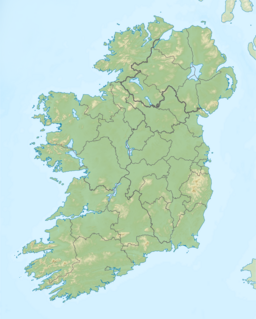| Lough Talt | |
|---|---|
| Loch Tailt (Irish) | |
 | |
| Location | County Sligo |
| Coordinates | 54°5′0″N8°55′30″W / 54.08333°N 8.92500°W |
| Lake type | Glacial lake |
| Primary outflows | Lough Talt River |
| Catchment area | 5.7 km2 (2.2 sq mi) |
| Basin countries | Ireland |
| Surface area | 0.97 km2 (0.37 sq mi) |
| Max. depth | 40 m (130 ft) |
| Surface elevation | 130 m (430 ft) |
| Islands | 2 |
| References | [1] [2] [3] |
Lough Talt (Irish : Loch Tailt) [4] is a lake in the Ox Mountains of south County Sligo, Ireland. The lake is located between the villages of Tubbercurry and Bonniconlon on the R294 road. Lough Talt is part of the Lough Hoe Bog Special Area of Conservation, an area of montane bogland and oligotrophic lakes. [5]
Contents
Lough Talt is the largest of the lakes in the Lough Hoe Bog area. [6] It is a glacier lake and lies at 130 metres (430 ft) [1] above sea level and measures 40 m (130 ft) [2] at its deepest point. Its area is about 1 km2 (0.39 sq mi). [1] The lake flows out to the Lough Talt River which eventually joins the River Moy. [3] The lake has two crannogs (artificial islands). [6]

